This week we see a wide range of scenery from the industrial metal and steel of military naval ships to the picturesque natural habitat of the Dismal Swamp.
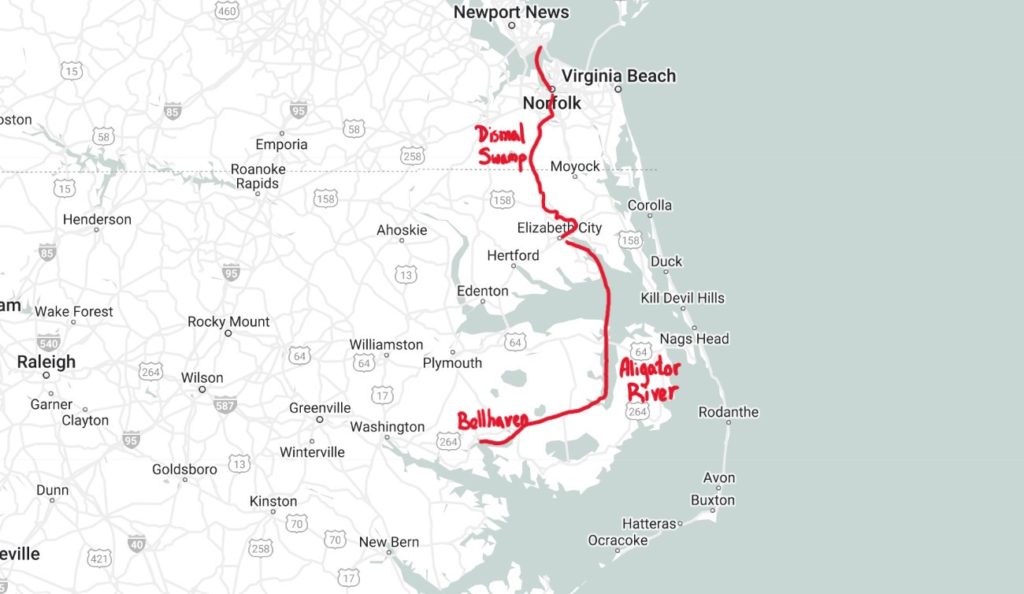
October 22 to October 27
The Feiks moved on to Norfolk Saturday morning, about 1-2 hours away. We stayed put. The winds were blowing at 25+ knots, and I was pretty sure I wouldn’t get the anchor up in those conditions. Shane and I planned our next two days of travel. We had two options along the first stretch of the Intracoastal Waterway (ICW): the more popular Virginia Cut or the Dismal Swamp. The Cut is deeper (12 feet at least), passes through only one lock and is shorter, distance-wise, but quite busy with commercial and pleasure craft traffic. The Dismal Swamp is shallower (promising only 6’ at minimum – our draft is 5’), requires passage through two locks, has an increased risk of hitting deadheads and other debris, is longer, and sailboat owners also have to worry about their mast clearing the tall trees that line the canal…but…we had also heard, the Dismal Swamp is beautiful. After MUCH debate, we decided on the Dismal Swamp.
We pulled anchor at 8h Sunday morning, with some muscle from me, Shane and the engine. We headed to Norfolk, which was busy, but not nearly as busy NYC’s harbour. Along with mile 0 of the ICW, Norfolk is home to the US Navy’s Atlantic fleet and frequented by cruise ships and other commercial vessels. The VHF was alive with chatter between pleasure craft and commercial vessels, organizing who would pass who and on what side and who needed to get out of the shipping lane altogether. We were no exception. We were hailed by a barge advising they would pass on two whistles. “Two whistles – what?” I looked at Shane. “They’ll pass us when we hear two whistles? The name of their boat is Two Whistles?” I saw Shane’s cogs turn and the light come on – “roger that”, he replied. Somewhere in the recess of his mind, he remembered that two whistles meant that the pass would occur on the starboard side. Phew. We saw dolphins. We saw several naval ships, all lined up at dock like a life-size game of “Battleship.” And, we saw the Feiks at their anchorage; Regina was on deck so we were able to wave and holler “see you in the Carolinas.” We made a quick stop at Ocean Yacht Marina for fuel and a pump out before starting down the ICW, and who was on the fuel dock doing the same? Charles and Petty of Dassie! We had a quick catch-up before they shoved off to their next destination, hoping again, we’d see them soon a little further south. And we did, but sooner than we thought…
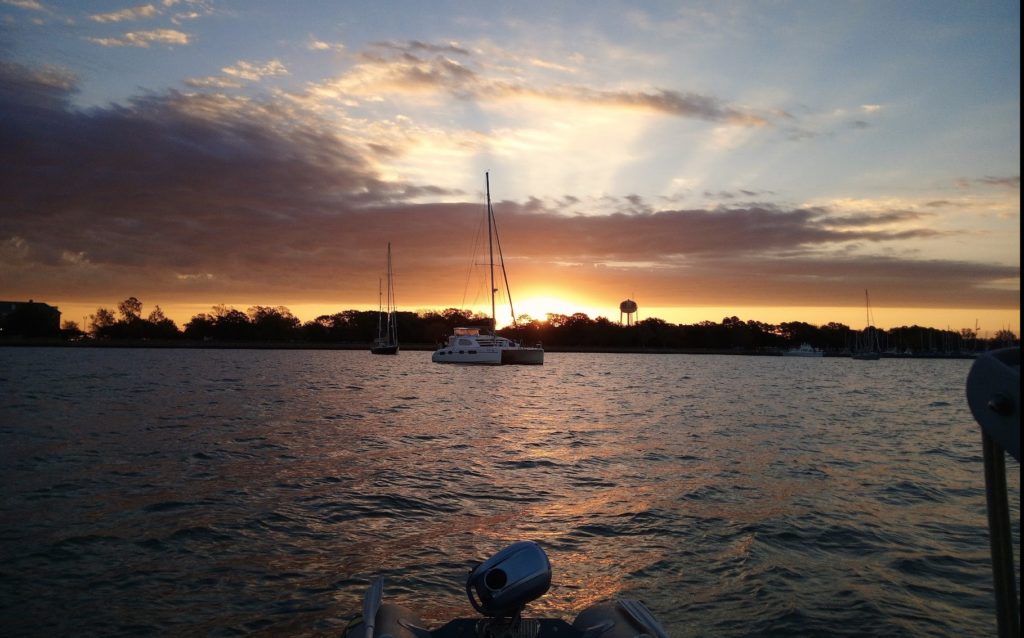
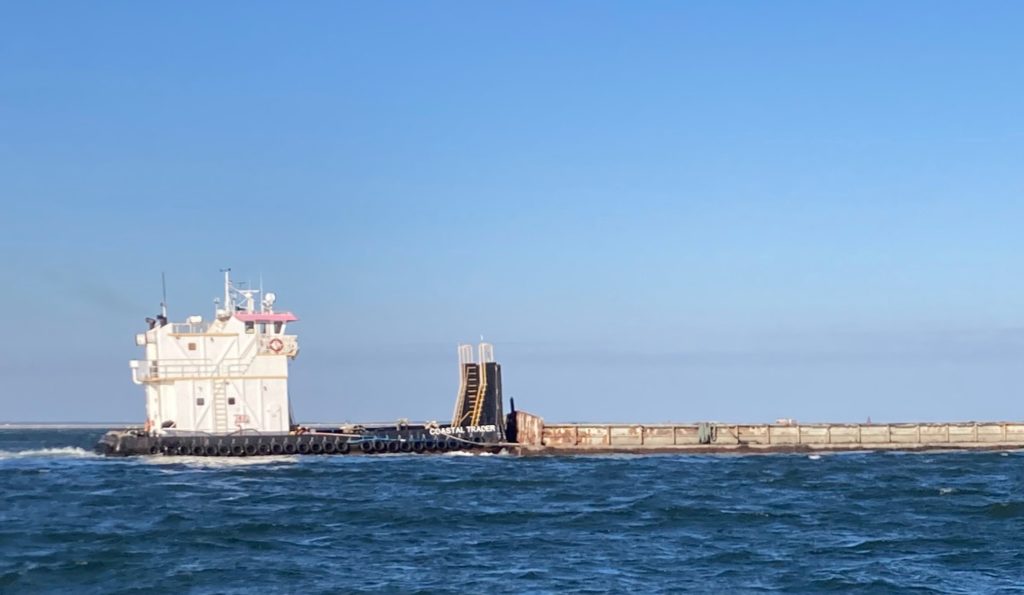
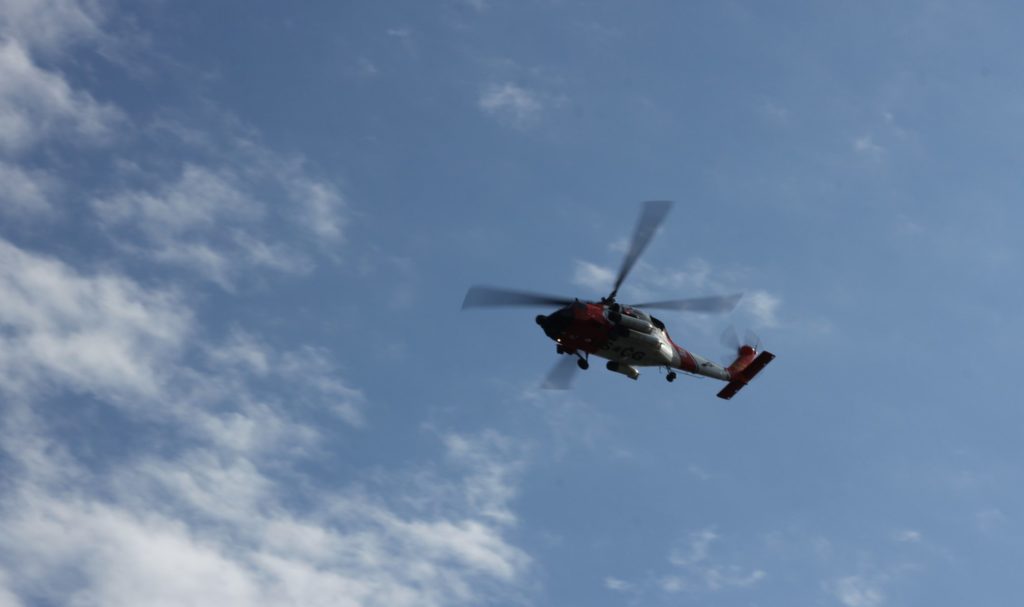
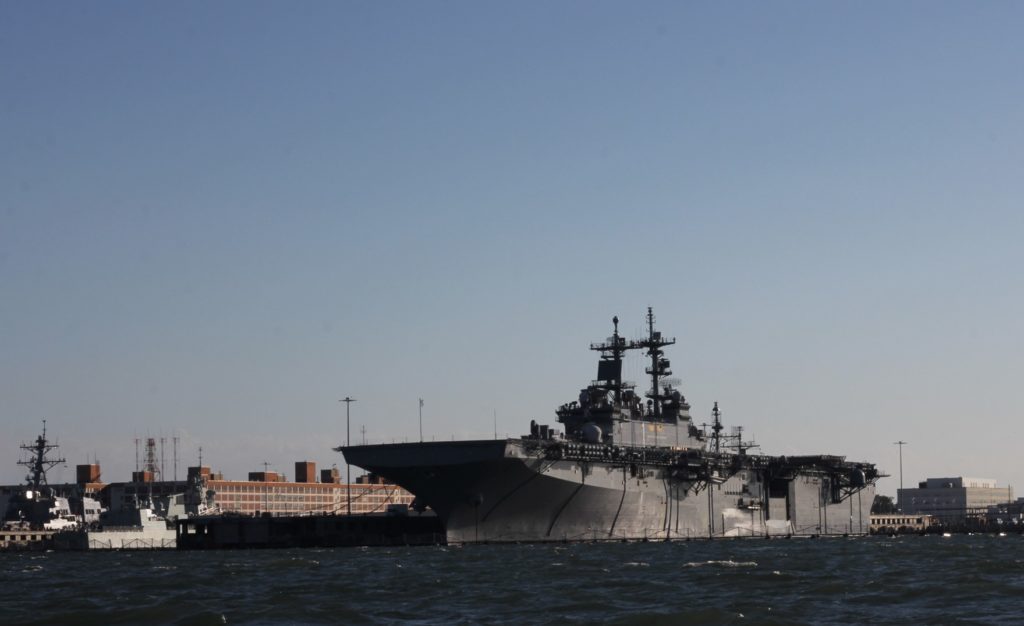
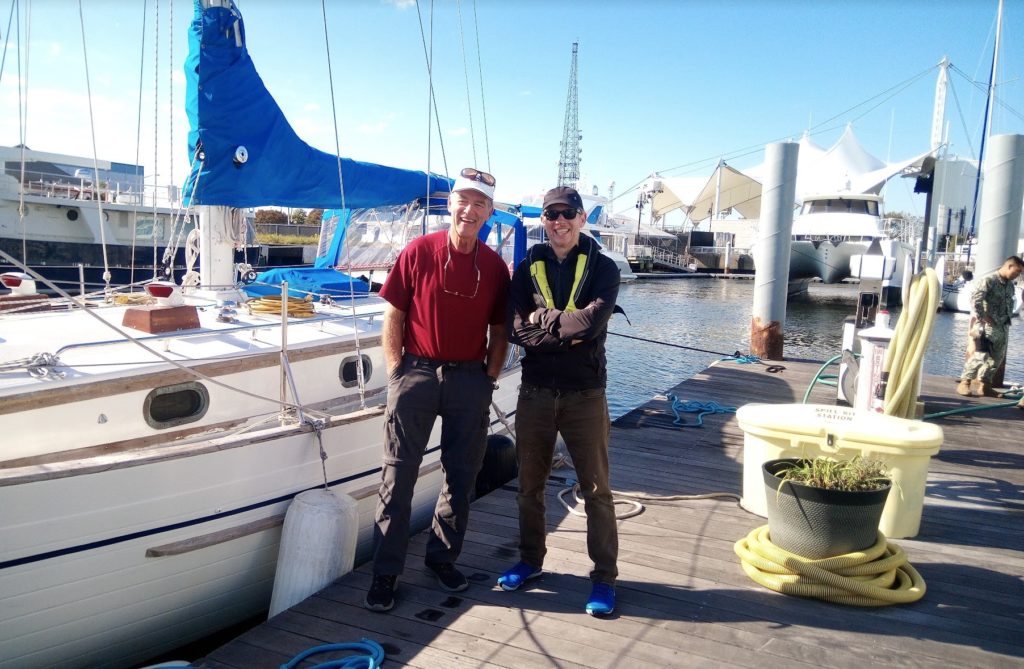
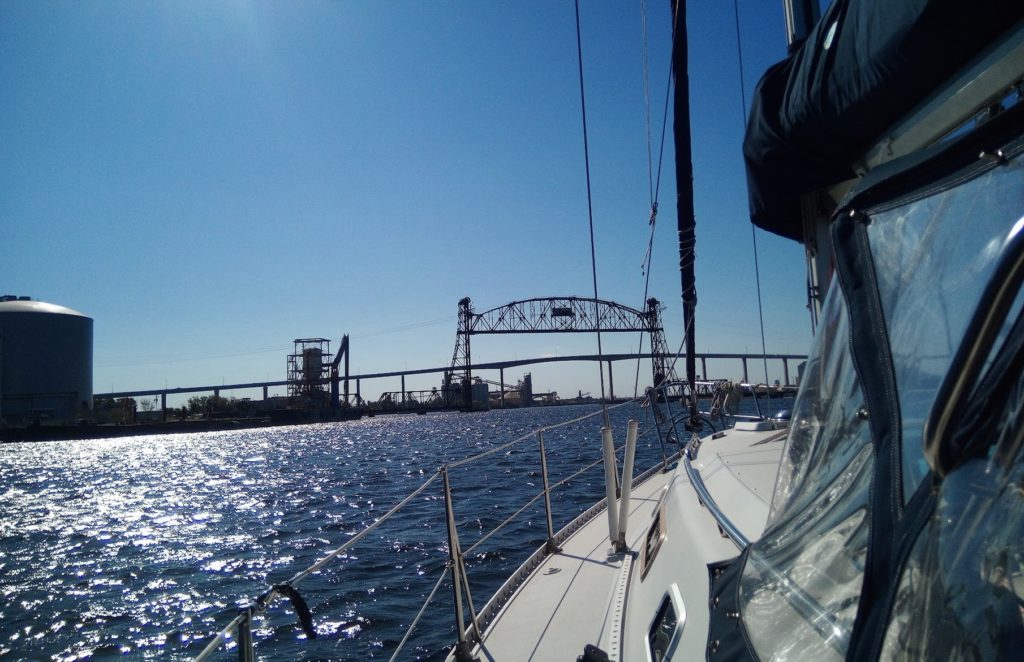
Our next stop that morning was at the Norfolk Southern #7 Railroad bridge, which was closed while a slow moving, long train passed. We idled, spun and slowly back tracked for 20 minutes or so with a dozen other boats (including Dassie) until the bridge could reopen. We were lucky that the waiting area was wide and protected. The bridge opened, and we waved goodbye to Dassie who were taking the Cut. Of the dozen boats waiting at the bridge, only 3 of us continued on to the Dismal Swamp. I silently hoped we weren’t making a mistake. We reached our first lock at about 12:50h, with the two other boats, but the lock wasn’t opening until 13:30h. The two locks and their corresponding bridge on this route only have four scheduled openings per day. There was no maneuver room, so we all threw down an anchor. I can’t speak for the others, but we could only put out about a 1:1 ratio of rode/water depth, as we had absolutely no swing room. The anchor dragged, but I only had to reset once. We left the motor running, in case it wouldn’t restart. It was an easy lock and the lock master was friendly and helpful, grabbing our lines and securing them around the bollards for our gentle 8’ ascent.
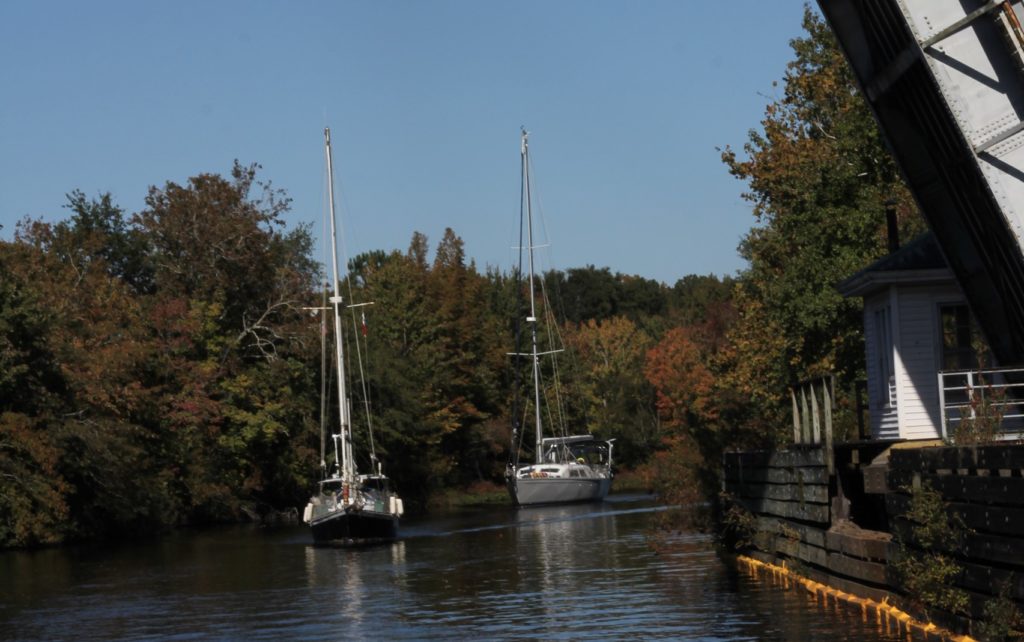
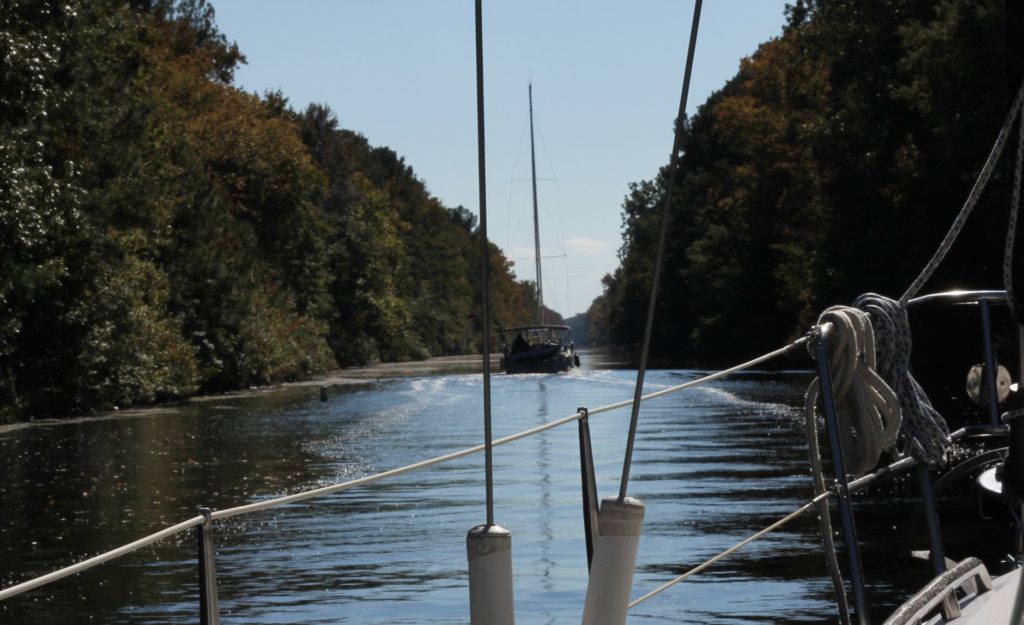
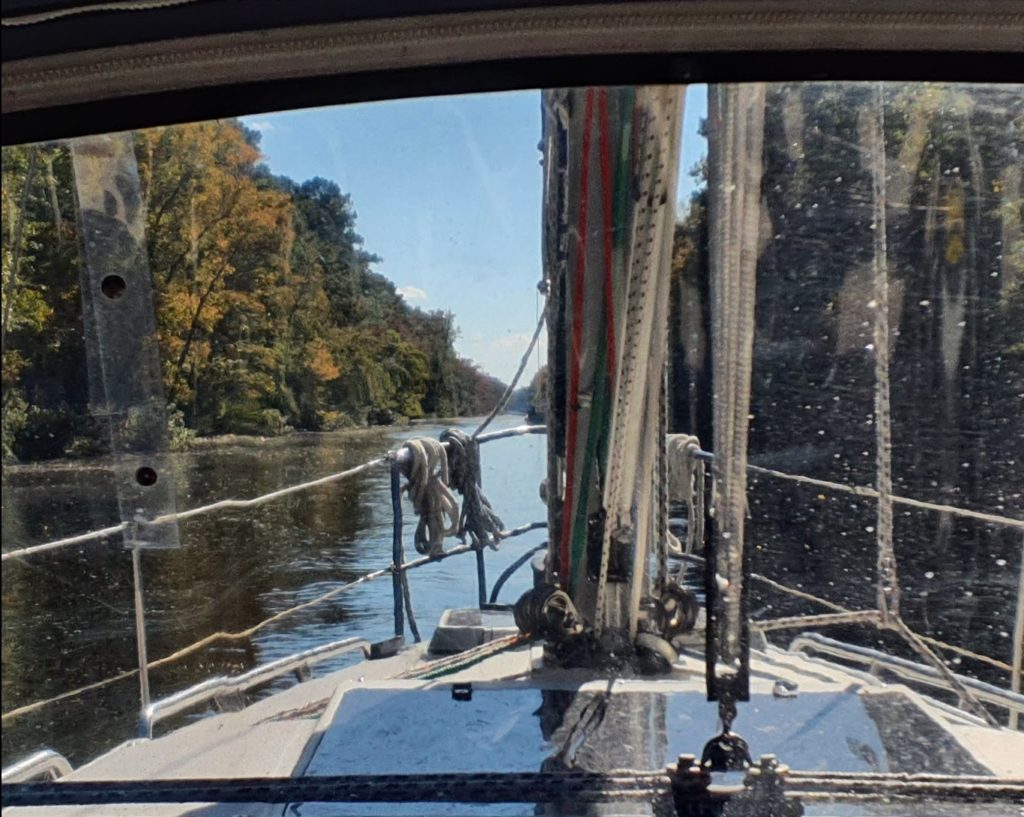
The swamp did not disappoint. The foliage was just starting to get its Fall colours. The air smelled of Cedar and Pine trees. (We later found out the it was actually Cedar and Cyprus.).We saw sunning turtles, birds and fish. We slowly transited down this beautiful tree lined canal. We bumped something with our hull once, but we had reset our min/max depth readings when we entered the canal and our minimum depth showed 6.9’, so it was likely floating debris, rather than bottom.
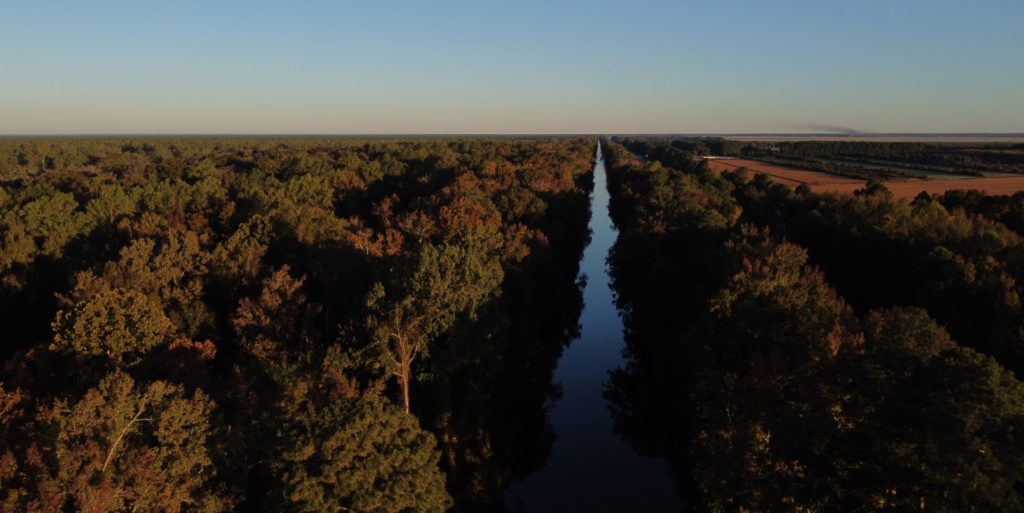
We tied up at the visitor’s centre part way down the swamp. The visitor center dock has room for about three boats, but there were four of us, so we rafted up for our first time with a Catalina (Excursion) and met its owners Scott, Erin and Bob the cat. We also met the sailors on the boat docked behind us, an adventurous fun-loving couple from Quebec (Phil and Lau from Freyja) who were headed south to first fish for lion fish in the Keys, then to Mexico to get their PADI diving instructor certification. John and Lisa were on the third boat, Spanish Wells. They joined us on Foggy for the evening and shared their knowledge of the area and traveling adventures, including a self-guided African safari. (Wine and bourbon were also shared). John and Lisa were on a three week trip, heading North.
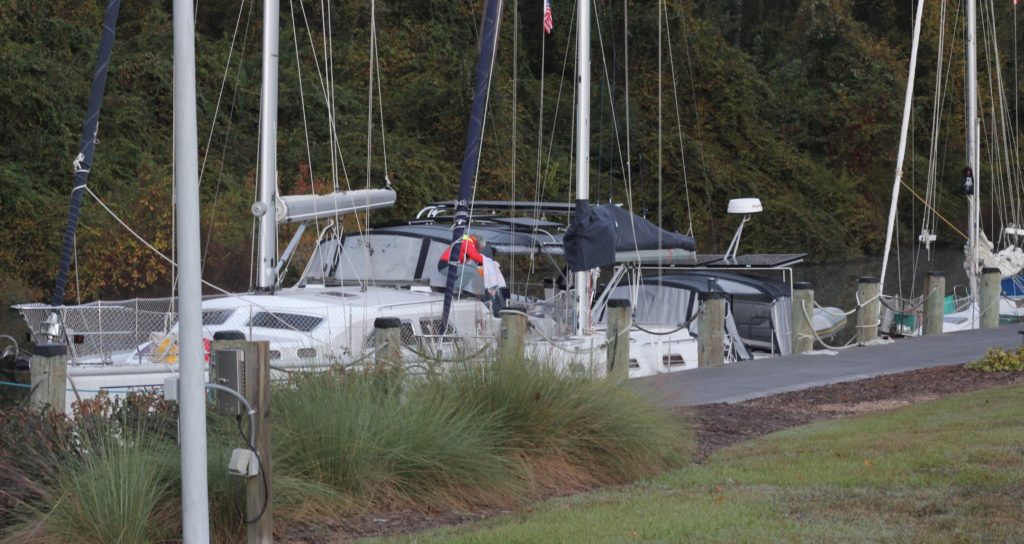
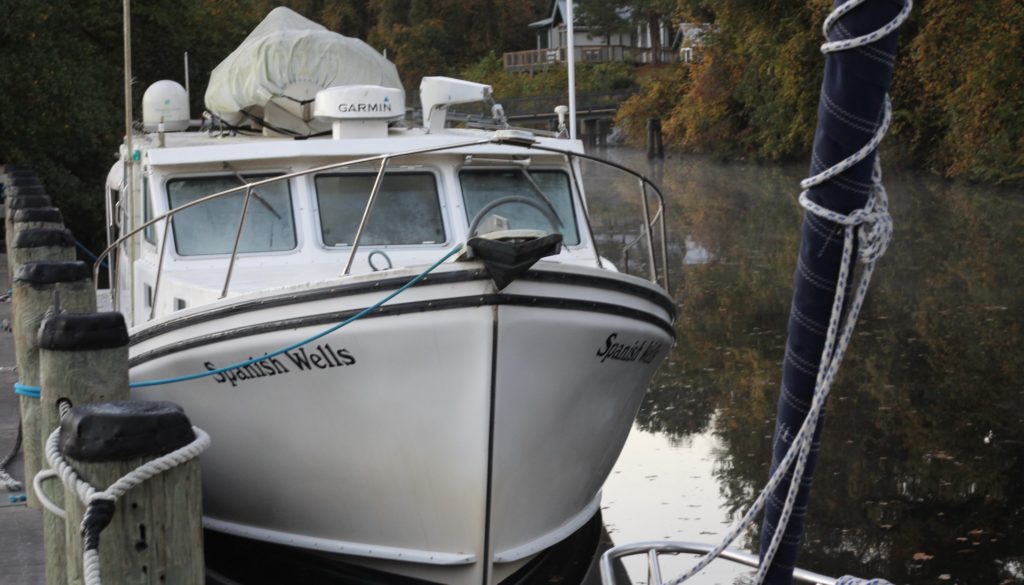
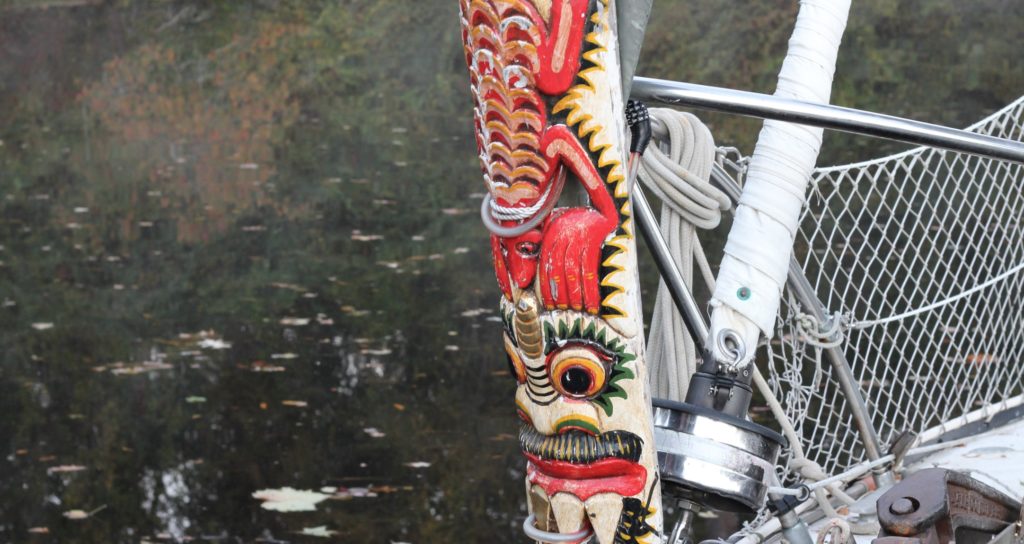
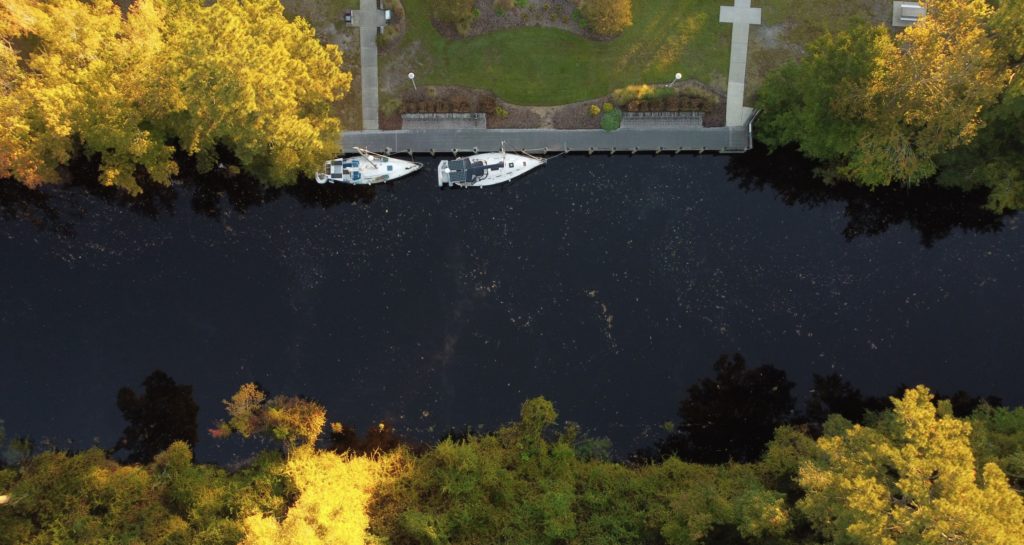
The others left early the next morning for the first lock opening. Shane flew the drone and got great clips of the others leaving. Shane and I stayed behind to visit the Dismal Swamp welcome and education centres and to walk a trail or two. The Great Dismal Swamp is a designated historical site of the National Underground Railroad Network to Freedom, a wildlife reserve and a state park. It spans about 480,000 acres. The Welcome Center caters to boaters and drivers and the Education Center is on the other side of the canal and accessible by a pedestrian bridge that opens and closes on demand. The Welcome Center staff were very welcoming (got to love the Carolinas) and the Education Center was beautifully done. The history of the area is important and intriguing. The canal isn’t self was dug by hand, mostly by slaves. The Dismal Swamp area was also used as a hiding place for enslaved African Americans fleeing northwards to freedom. The Swamp is home to hundreds of mammals and birds, including bears, bobcats and flying squirrels. Shane and I heard, but didn’t see any animals on our walk; however, we were able to identify four types of ferns using a guide provided by the Park. When we got back to the boat, we had 45 minutes before we had to leave to catch the 13:30h South Mills bridge and lock opening, and spent it sharing “where did you come from and where are you going” with drivers who had pulled off Highway 17 and meandered down to to the docks for a stretch.
The trip down the rest of the canal was as beautiful and easy going as the previous day, with no bumps to the hull and a minimum depth of 6.9’ again. (The Army Corps of Engineers maintain the depth of the canal at a minimum of 6’ and are doing a great job). We did however skim a tree branch with our spreader, when dodging some debris in the water, but no damage was done. As we exited the canal, the waterway widened into the Pasquotank River. We saw lots of fish jumping and I spent some time with the binoculars watching the hawks soar and dive for their catch. We arrived in Elizabeth City well before dark and were able to dock for free at the Mid-Atlantic Christian University. Staff were welcoming and helped us get tied up to the pilings, which took us much longer than it should have. This slip was particularly challenging, as it was meant for catamarans. (It had a very short finger and the pilings were spaced very far apart.) We ended up taking the dinghy down, using it to get Foggy tied up to the out-of-reach pilings, then leaving it tied up in the water so we could back up Foggy’s stern closer to the dock. The University gave us access to the gymnasium showers and a thoughtful welcome package, both much appreciated.
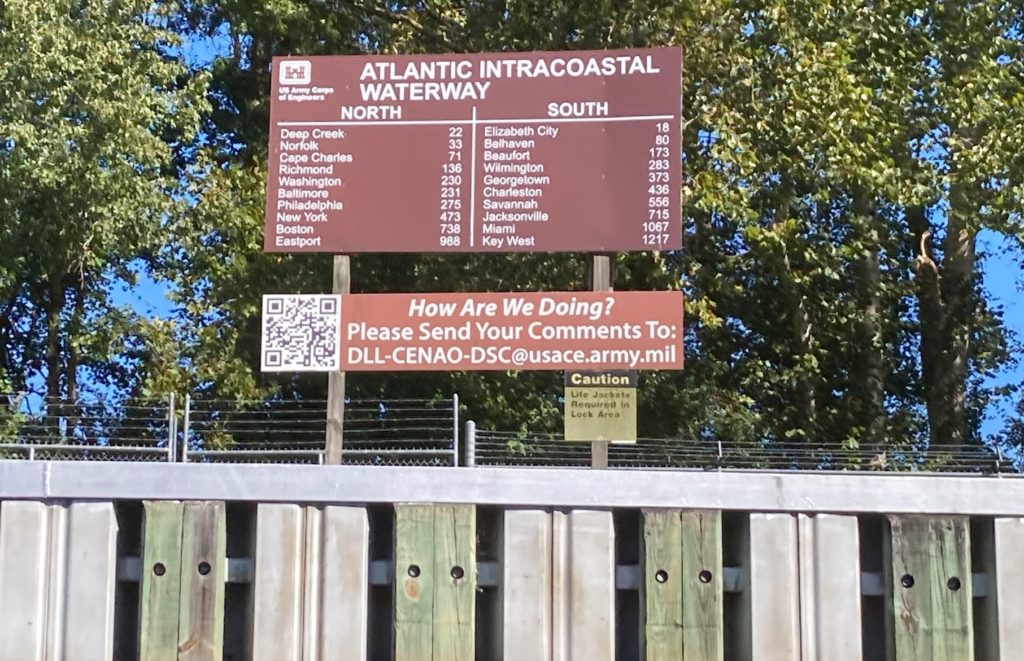
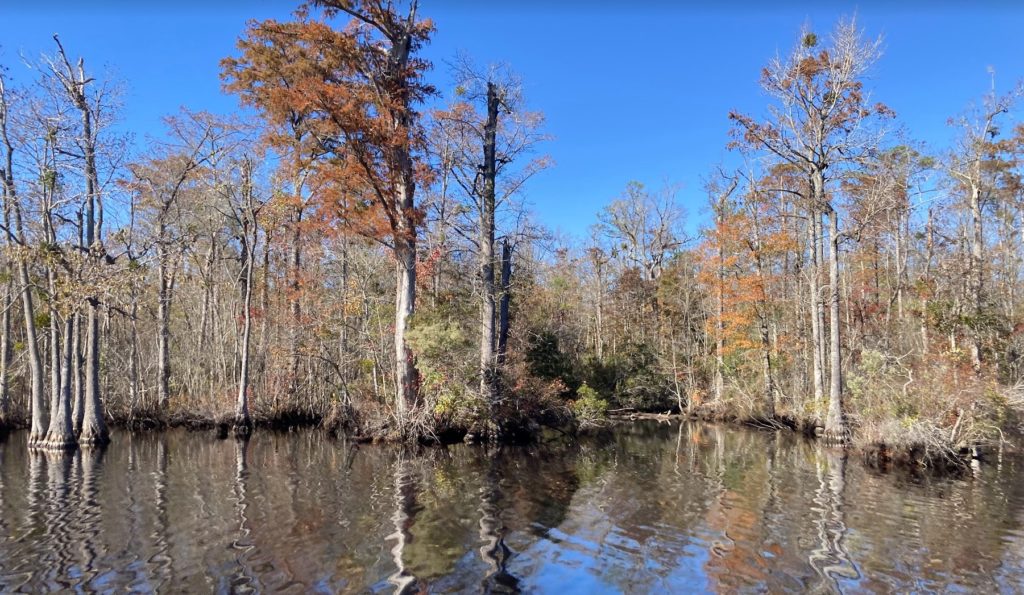
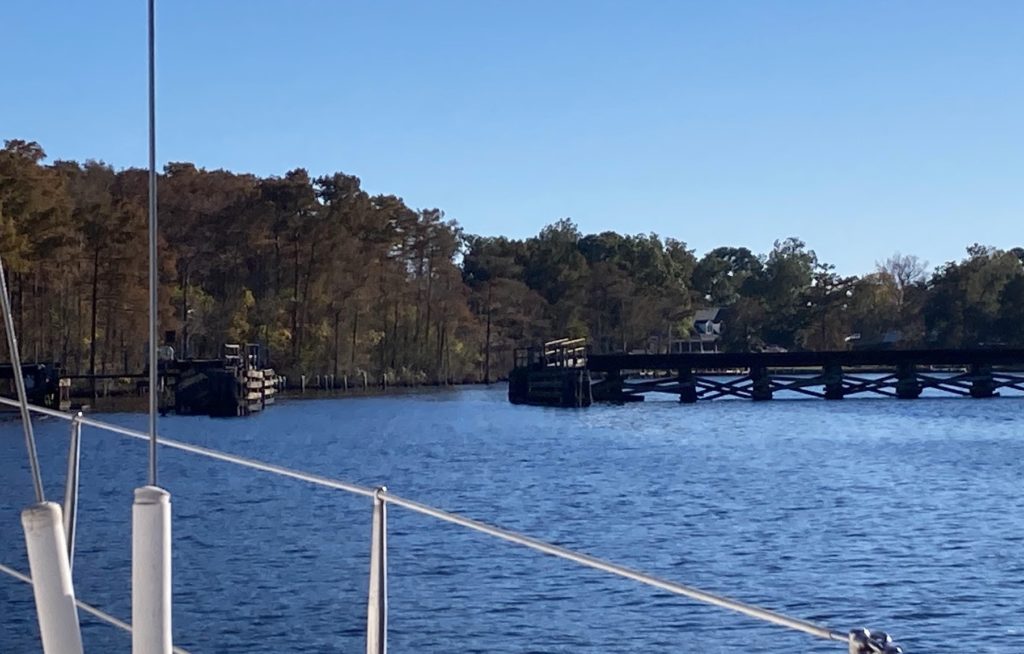
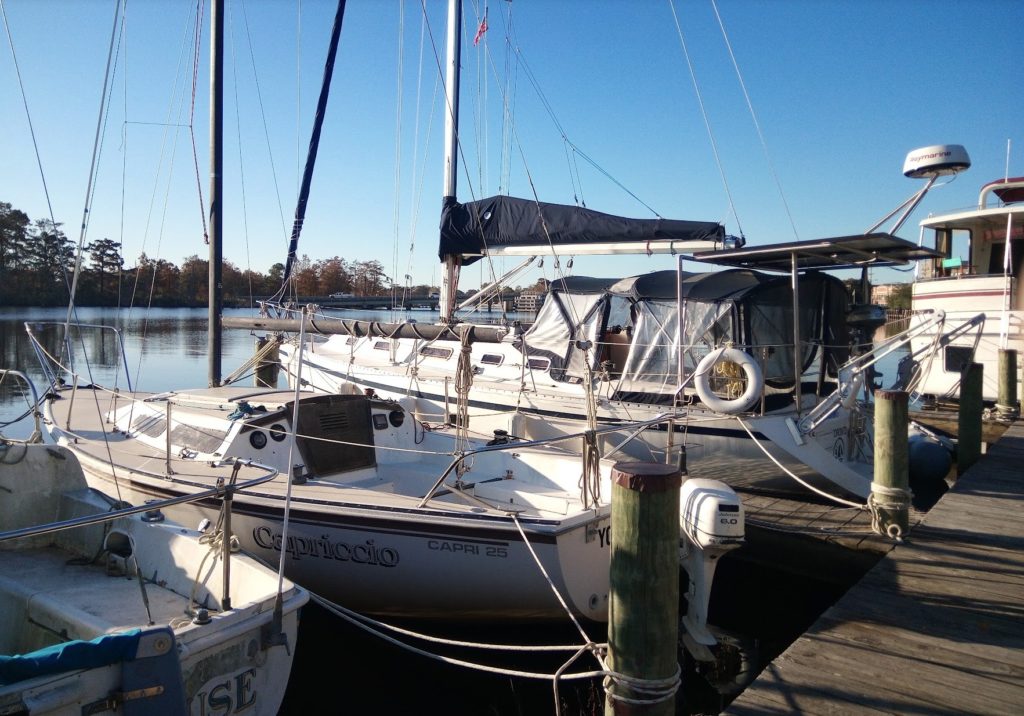
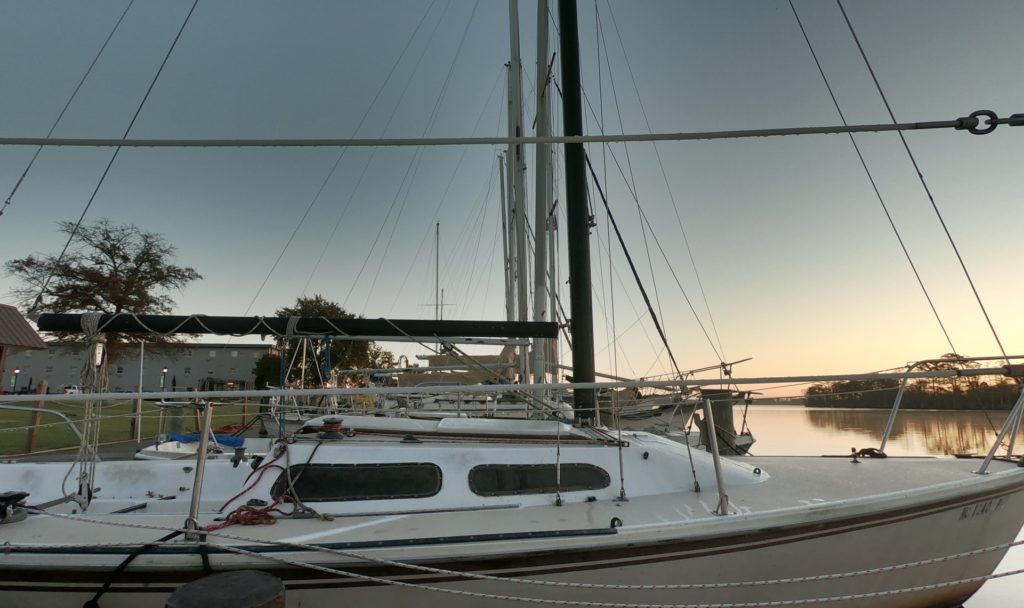
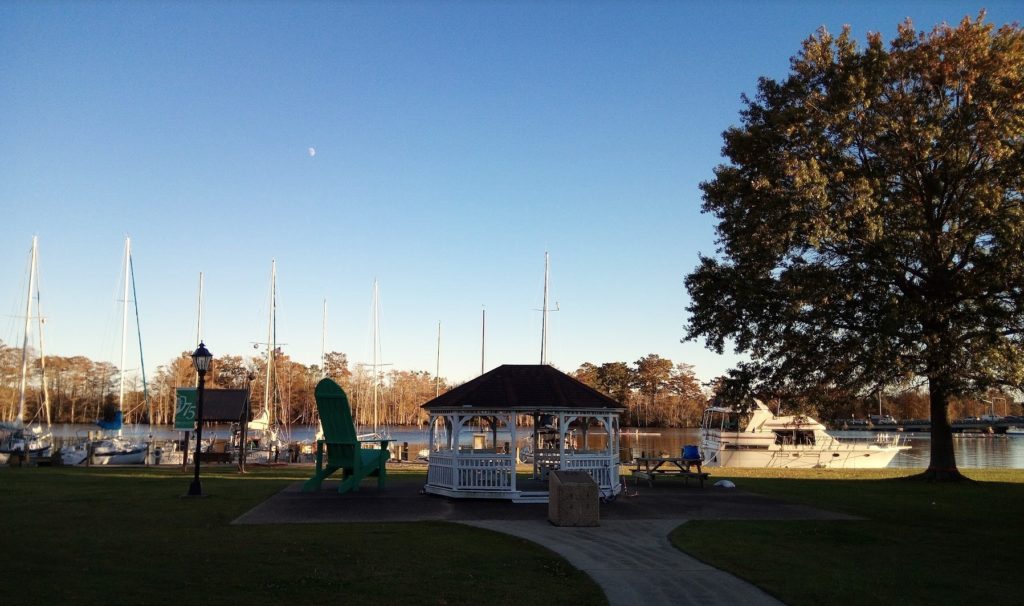
We had planned to leave on Tuesday, but the US 158 Highway Bridge (which needed to open for us to pass through) was being repaired. Come noon, repairs were still ongoing, so we called it and decided to stay one more night to explore the area. We started our ‘tour’ at McCracken’s Coffee House – great coffee says Shane (and he’s a coffee snob), excellent pumpkin muffins and a very funky vibe. Elizabeth City was quite cute and its residents friendly. It had beautiful water views, restaurants and what appeared to be an impressive number of microbreweries per capita.
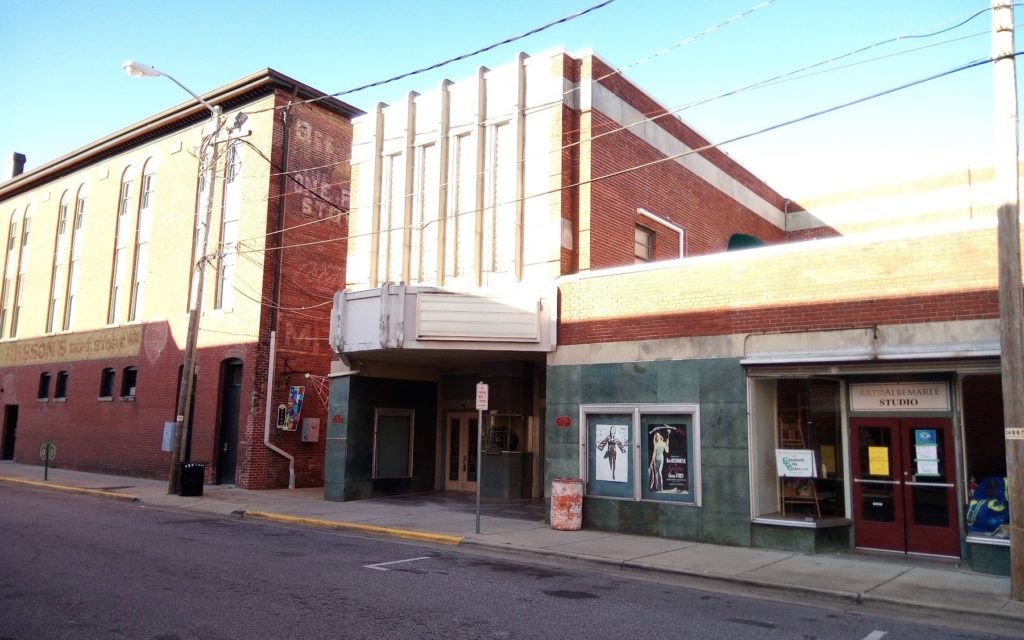
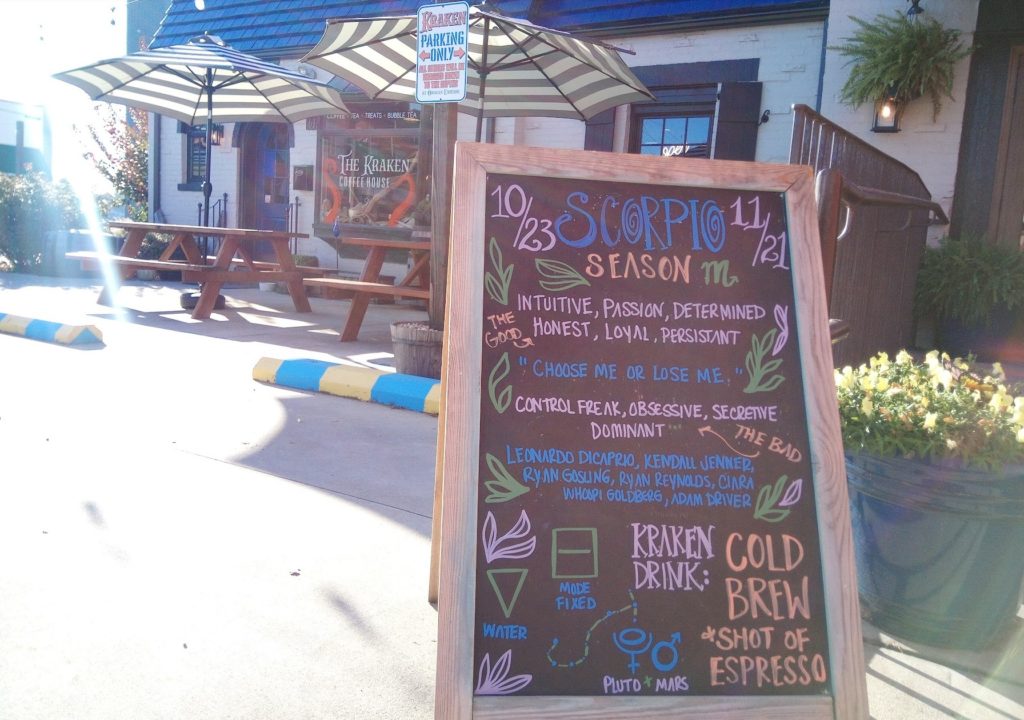
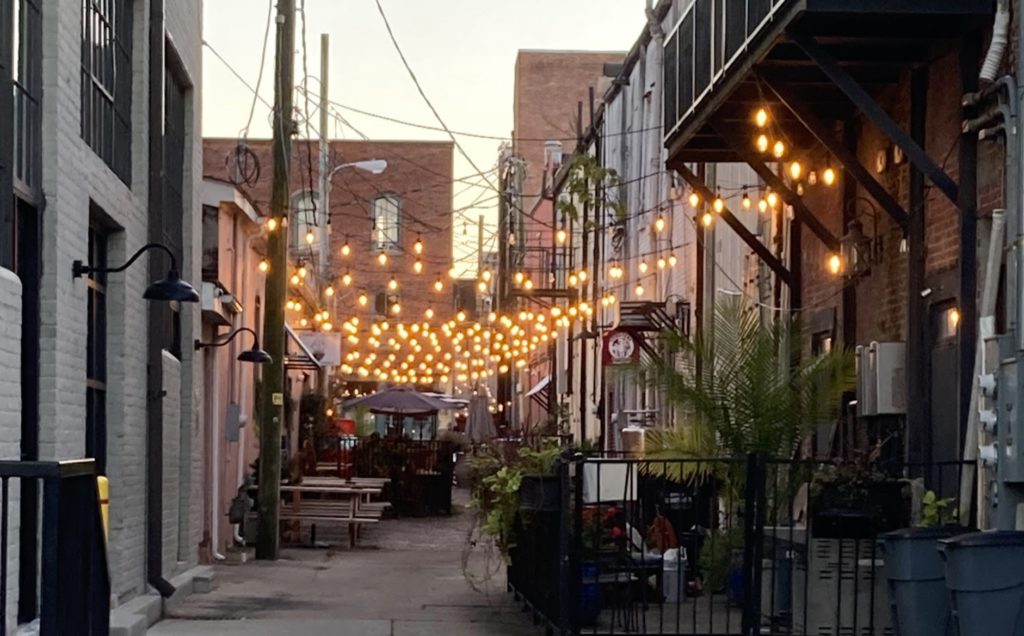
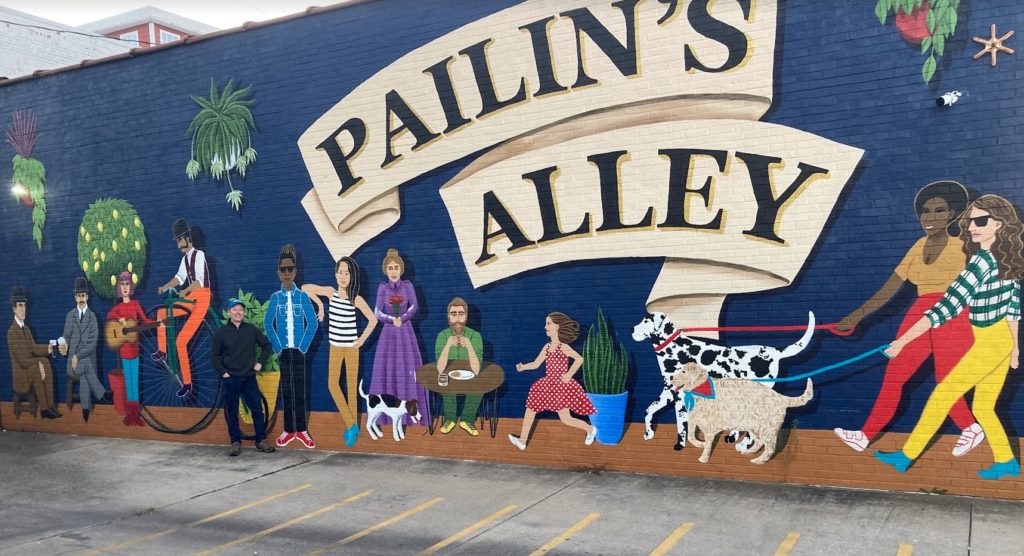
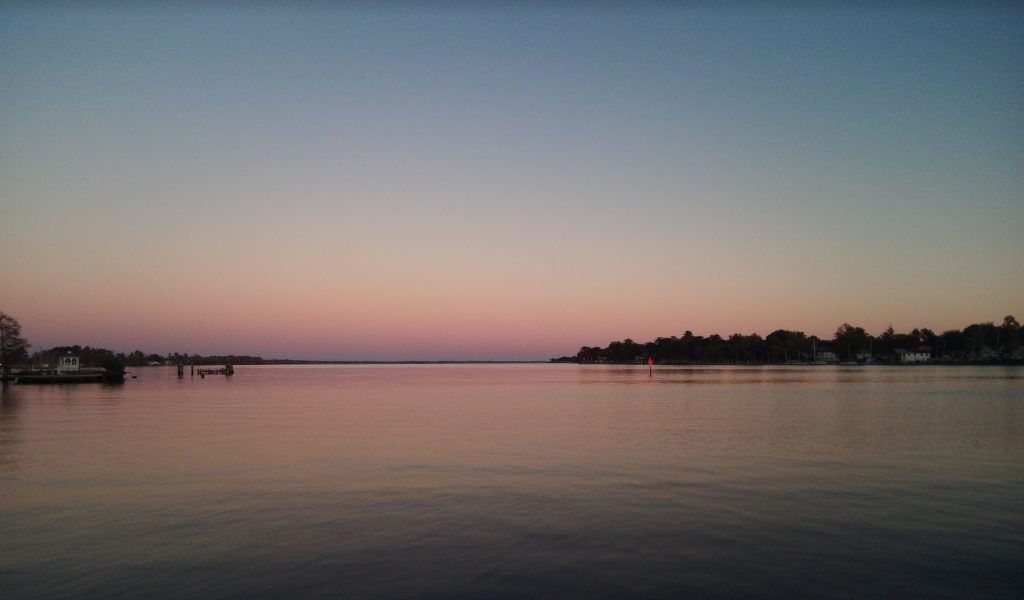
We woke up early on Wednesday hoping to get through the bridge first thing, but the Engineers were on-site doing more work, and the bridgemaster said it wouldn’t open anytime soon. Luckily, the morning was calm, so we were able to untie from the far pilings, lift our dinghy and stay fairly secure on the finger using the two accessible pilings and by repositioning some of our fenders. We monitored updates on VHF and heard the bridge was expected to re-open at 11h (in about 45 minutes). We set a timer for 30 minutes so that we could untie push off and be ready. Only 20 minutes later, we heard the bridge clanging and the gates lowering to stop traffic.
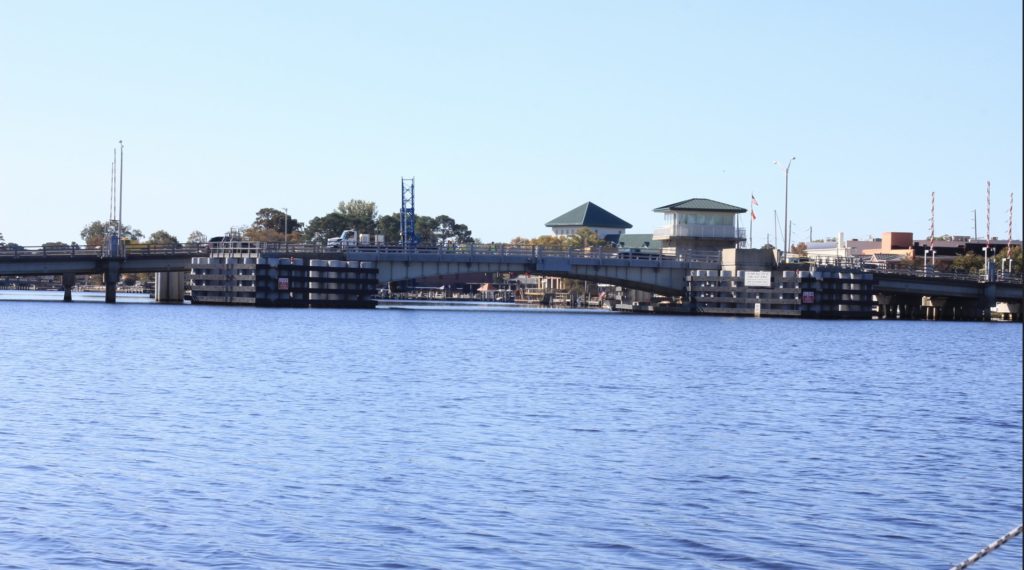
Shane and I got a move on, untying and pushing off, and I’m pretty sure we were off that dock within two minutes like bats out of hell without goodbyes or thank yous. We made that bridge opening and continued down the Pasquotank River to cross the Albermarle Sound. It remained sunny and calm, with no wind to sail, which would turn out to be the perfect conditions for the stunning scenery we would savour at our anchorage that night on Alligator River. (Yes, there are alligators in Alligator River and there is no visibility, so there was no swimming for this chicken.). The weather was so calm, in fact, and with so little traffic, Shane and I were able to leave Myrtle at the wheel and read in the cockpit. At one point, I did go out on deck to watch for crab pots, happened to look down and saw a stingray swim by. Based on a little research, I think it was a cow nose ray. We had heard that others had seen bears and deer in this stretch, but we saw none.
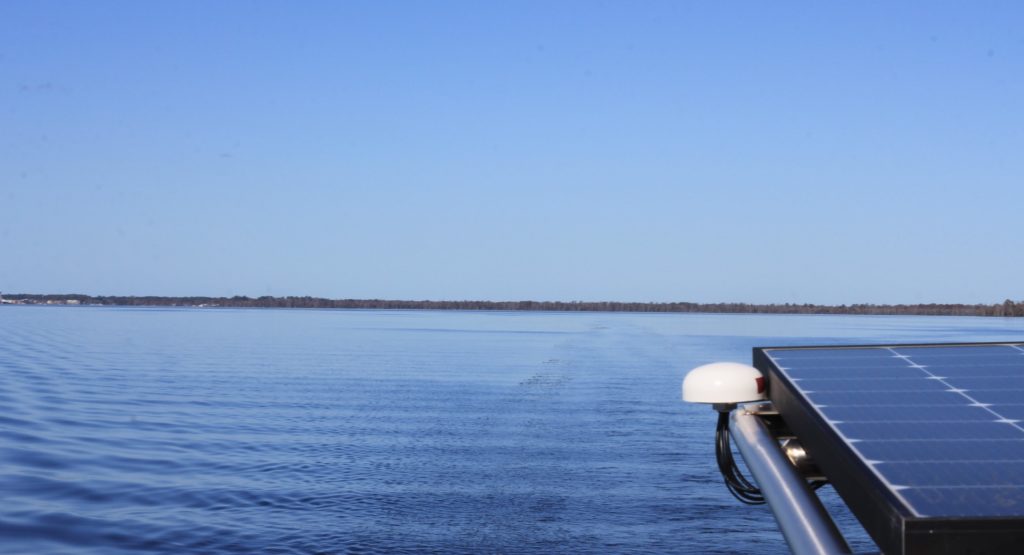
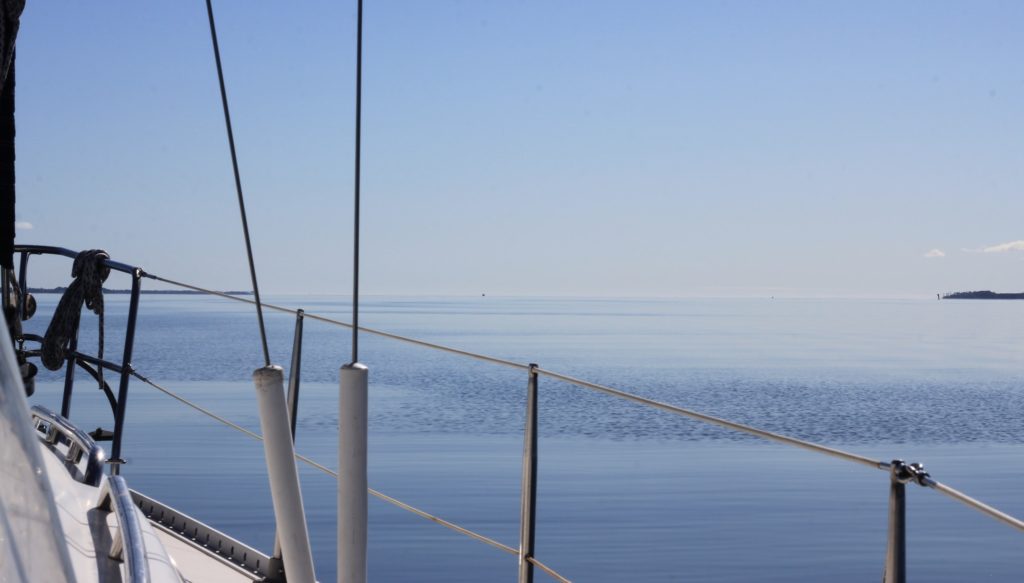
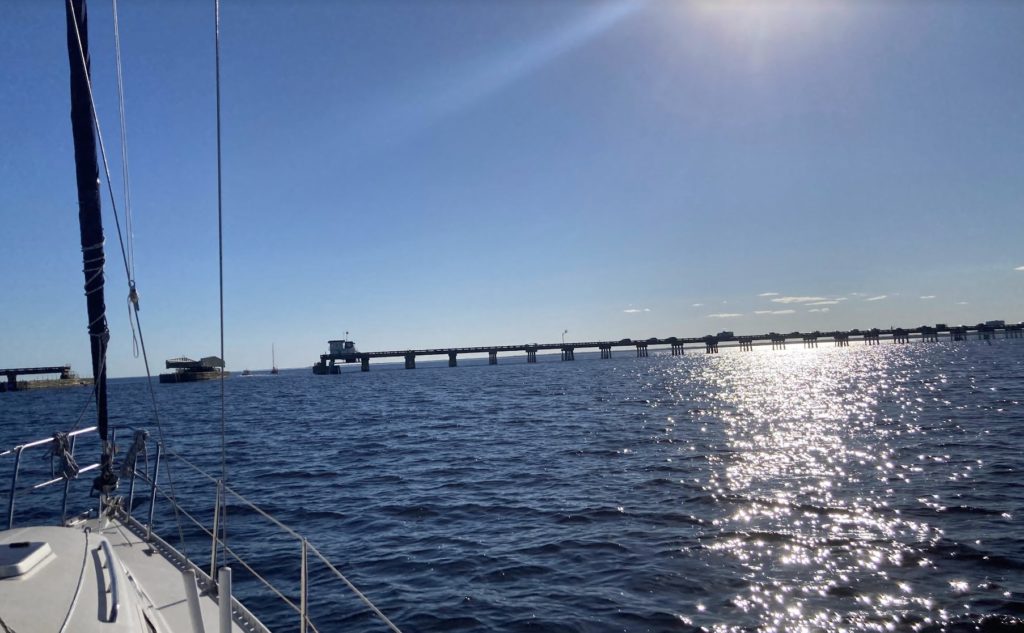
We anchored just before sunset on Alligator River at the entrance to the Alligator River-Pungo canal. The anchorage offered a blissful 360 view without buildings or city lights. Other than the odd airplane, we could only hear the lap of water on Foggy’s hull, crickets, hoots of a nearby owls and split-splats of little fish jumping. We sat out on deck to watch the sunset. The west shore was alight with oranges, reds and yellows that gradually darkened overhead to indigo and blues on the east shore. Then the night sky arrived. Little pinpoints of starlight at first, that quickly boldend and grew in numbers. As beautiful as the stars were, the moon took centre stage. It was waxing and almost full, and left a chain of dancing lights at our bow. We went to bed gently floating under that gorgeous celestial orb.
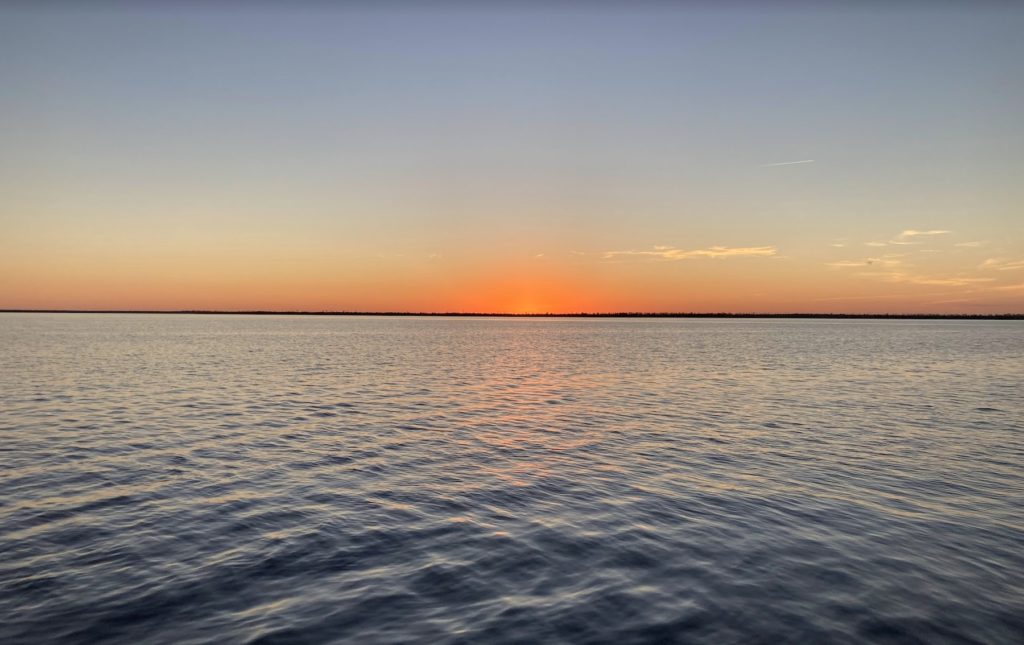
Thursday, we woke up to another gorgeous day. Shane flew the drone again, and again got some spectacular footage. We pulled anchor around 9h and transited the canal. It was busy and we had to keep a close look out on traffic and listen carefully to the VHF, as motor boats approached and asked to pass. We anchored in Bellhaven and reunited with Dave and Regina. We had drinks with some other sailors (from Willow, Keeper and iBoat) before dinner at the ICW brewery. Jeremy and Brittany (of Willow) are a young American couple who have been sailing full time for one and a half years. Jeremy said something that resonated and boost our spirits with Shane and I. He said that everything hurt at the beginning of their trip and that there was a large learning curve and sense of frustration as boat systems broke down, but that it gets easier. We took that to heart and later reflected that it is indeed getting easier as we go along – boat systems are getting figured out, we are getting stronger, and we are scarfing down less Advil! It was a great little gathering – great company by the water. Megan and Andrew of Keeper towed us back to our boat after drinks, as our outboard motor was on the fritz. Dinner that night was pizza on Vitae with Dave, Regina, Megan and Andrew.
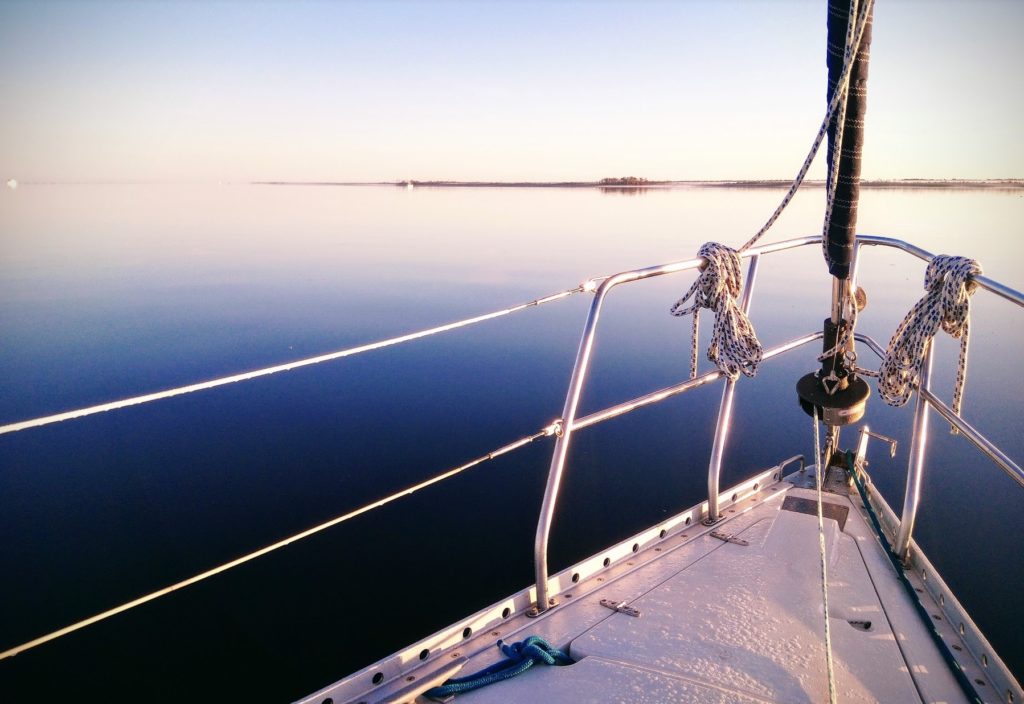
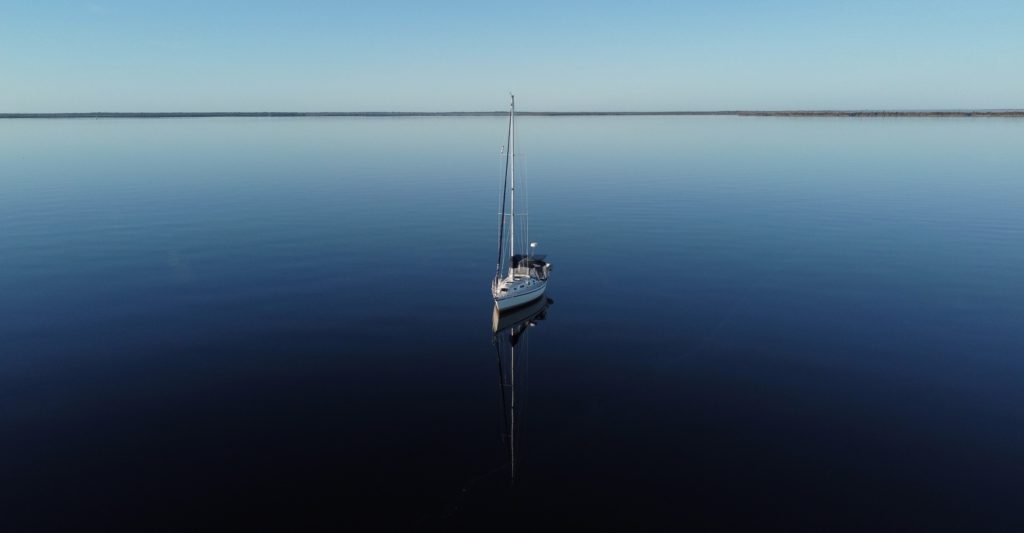
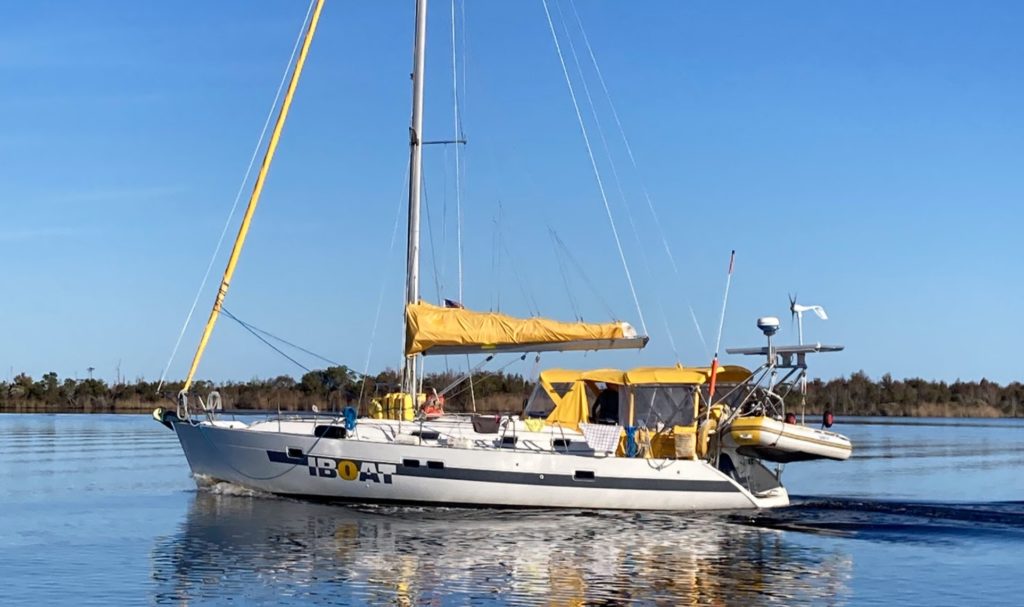
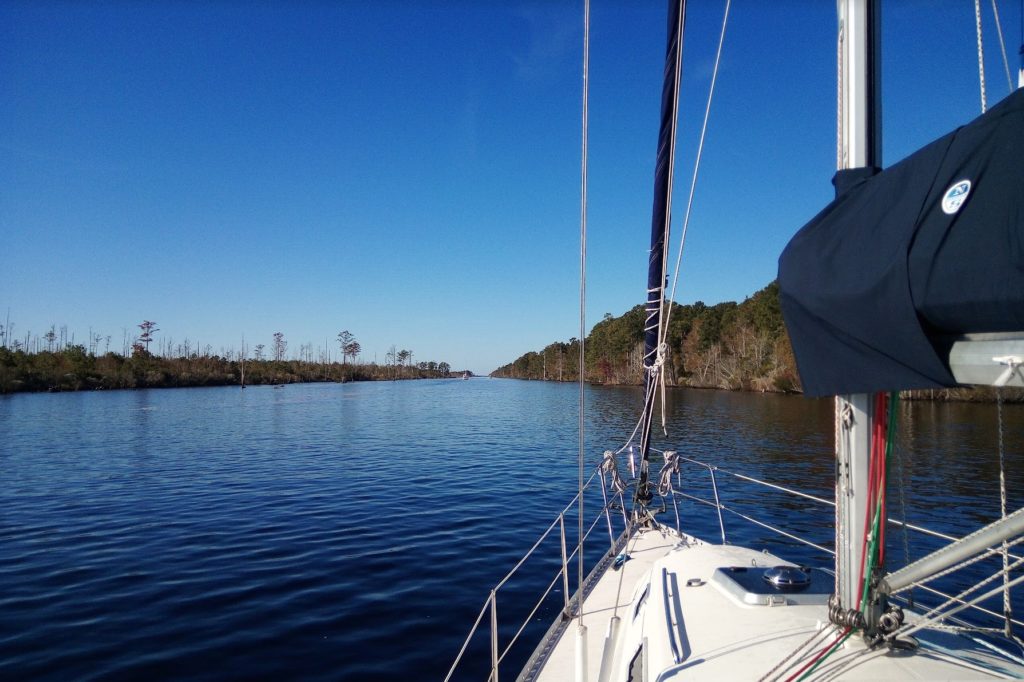
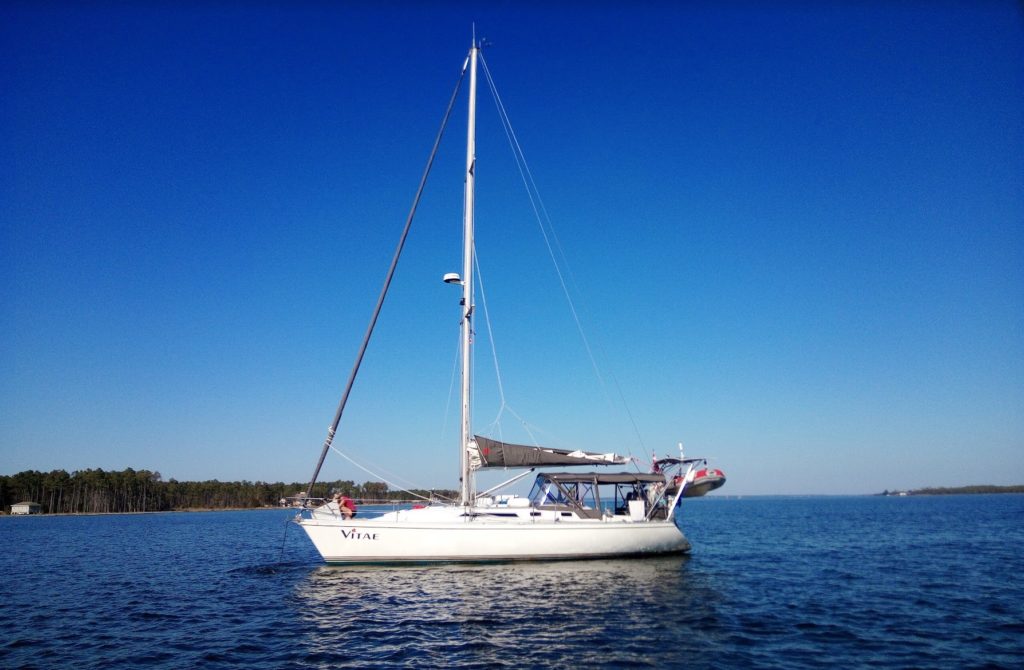
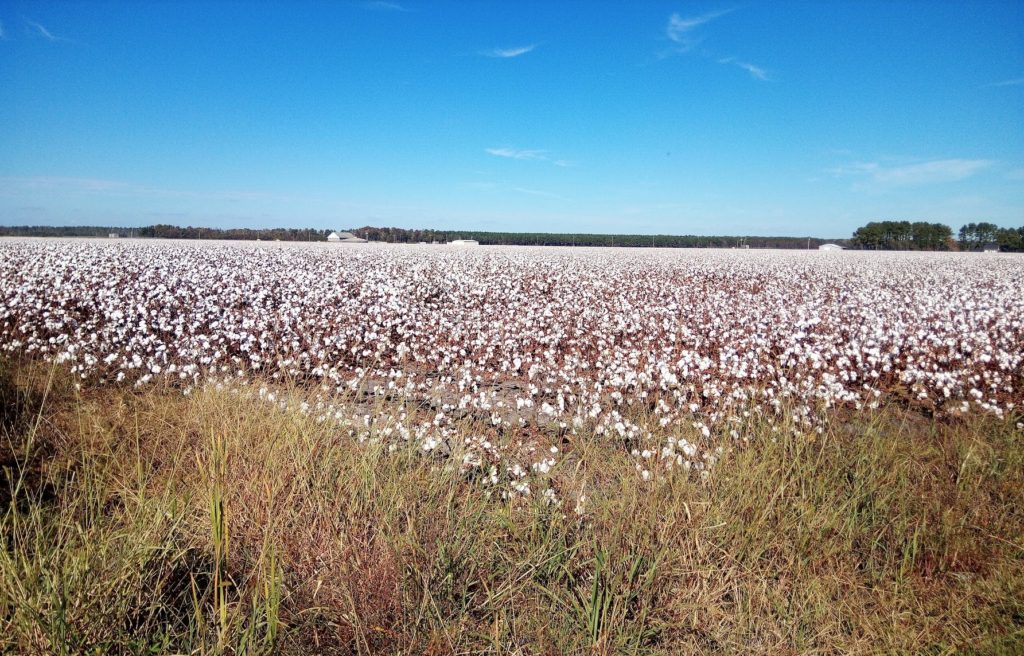
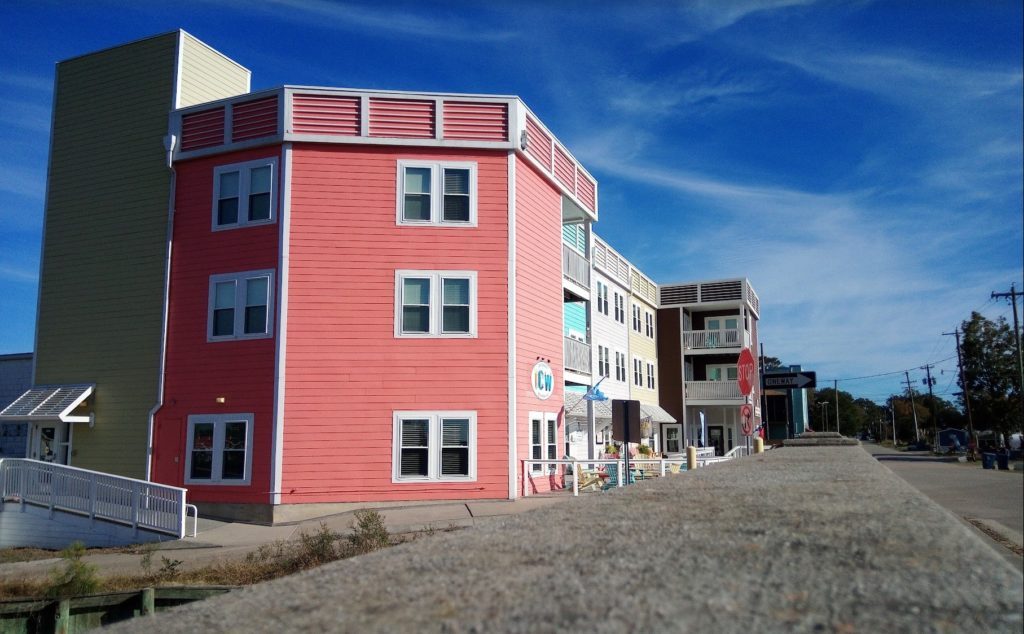
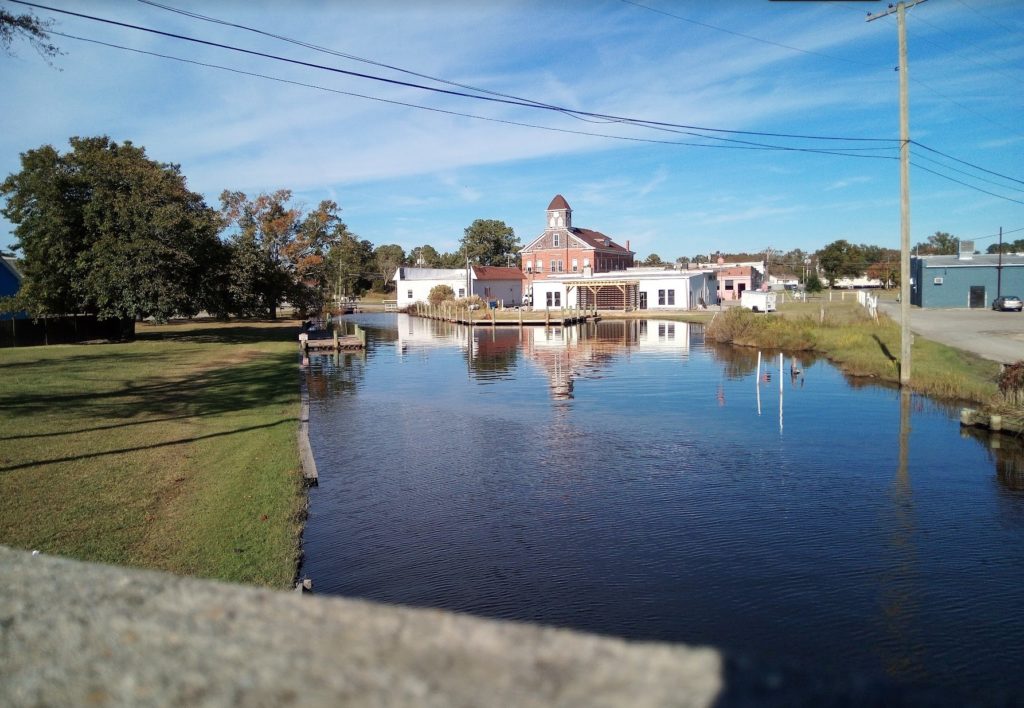
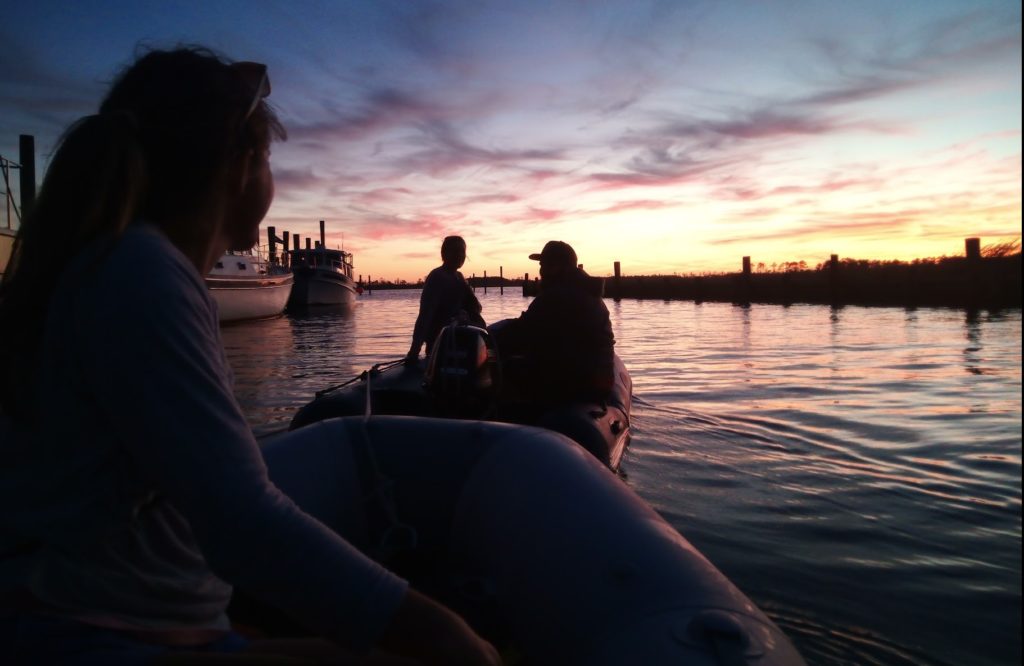
We spent Friday checking out Bellhaven by foot. We got groceries and found a post office. We looked in a few of its cute stores. I tried to get my haircut twice, but kept missing the hairstylist. There were storm ditches along the road that were teaming with fish; we even saw a heron fishing in one. We came across cotton fields and grabbed a few puffs that had blown onto the road. Twice we were given rides by locals, one who approached us in the grocery store and offered to drive us back to our anchorage, and another who pulled her golf cart to the side of the road later in the day and gave us a lift to the post office. We also got some boat chores done – cleaning and taking apart the outboard carburetor (which did not fix our outboard issues). The night ended on Foggy, with Dave and Regina over for dinner and board games.
- New animals seen this week: Stingray
Fun fact: The James Adams Floating Palace Theatre entertained residents of the Dismal Swamp twice a year. The theatre was founded in 1914 and operated for 30 years. It’s venue was a 128 foot barge outfitted with a theatre and over 500 seats. It travelled along the coasts of the Chesapeake and into the Carolinas. Author Edna Ferber spent time with the theatre, and her experiences provided fodder for her novel, Show Boat.
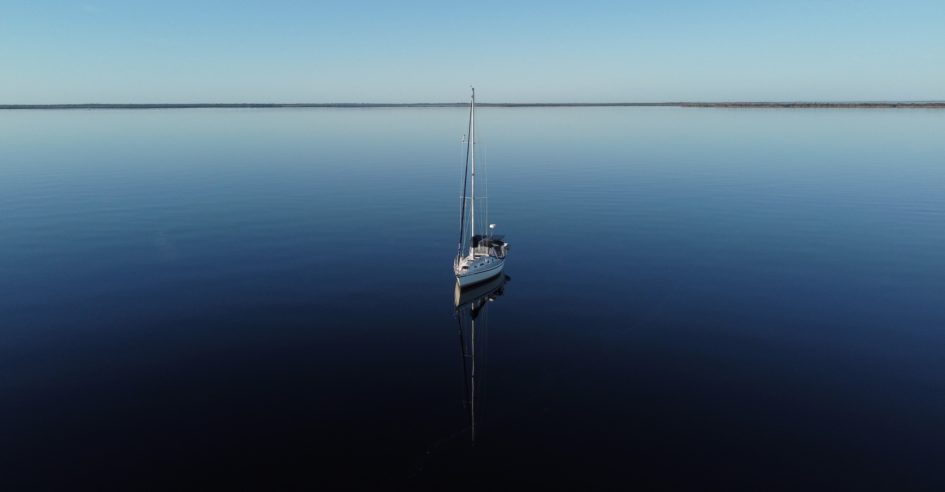
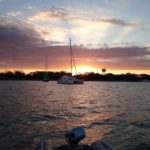
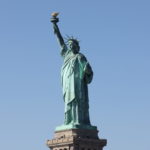
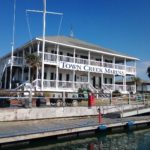
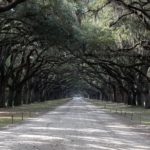
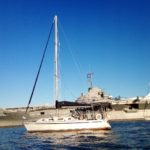
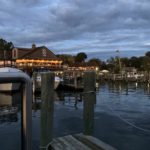
November 18, 2023 at 9:17 pm
Big sigh…..so wonderful. I will have happy dreams tonight..